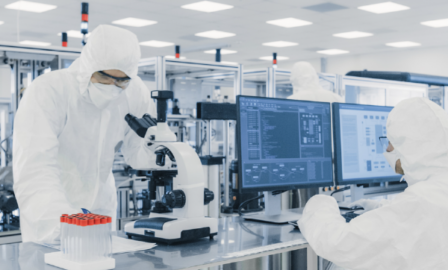What Does the FDA Think About AI in Medical Device?
The FDA has welcomed the use of AI in medical devices, as evidenced by the former commissioner’s optimistic attitude about the technology’s potential. A fresh batch of approvals from the past several months further proves the agency’s willingness to support AI. Other life sciences companies have already been leveraging the use of AI to improve R&D strategy, clinical operations, and drug development.
Many of the new software as medical device (SaMD) products use algorithms to analyze medical imaging and help doctors make better decisions. However, some industry leaders worry that the FDA doesn’t have adequate guidelines to properly ensure patient safety. The agency has worked to address those concerns through the development of a Software Pre-Certification program, which is currently in the pilot phase.
In 2018 the FDA authorized a record 106 new medical devices, the highest number ever approved in one year. Under Commissioner Scott Gottlieb, the agency focused on keeping up with technological innovations in pharma. In his tenure at the FDA, Gottlieb was confident that artificial intelligence, specifically machine learning, had the power to benefit the industry in dramatic ways. With Gottlieb’s resignation, Ned Sharpless will serve as acting commissioner and seems aligned to Gottlieb’s enthusiasm for AI based on comments Sharpless made in December 2017 on the use of big data in cancer research.
FDA-Approved Software as a Medical Device
So far, many SaMD products that use AI are algorithms for processing medical imaging. These clinical support decision (CSD) tools can identify and diagnose an issue without a physician’s help but are often used in conjunction with a professional’s opinion. This has been made possible by the development of deep convolutional neural networks, or DCNNs, that can transfer what the AI has learned in one application and quickly move it to another. Several of these SaMDs have been used in cardiology, from smartwatches that can detect heartbeat irregularities to algorithms to detect levels of coronary calcium.
Other SaMDs analyze CT scans and look for liver and lung cancer, bone fractures, brain hemorrhaging, or signs of a stroke. These algorithms can also make triage decisions and help at-risk patients wait less time to see a specialist. DreaMed created a CSD that collects data from a person’s insulin pump and glucose monitor to evaluate about how much insulin he or she needs. The AI then sends a suggestion to the doctor, who then can adjust the patient’s insulin delivery remotely.
One of the most talked-about new SaMDs is Idx’s retinal scanner that detects referable retinopathy, which was approved in August 2018. The device uses a retinal camera to scan the eyes, analyzes the data, and then either gives the all-clear or refers the individual to an ophthalmologist. Although the technology is only about 85-95% accurate for now, the University of Iowa Healthcare has been willing to try to use the device to make diabetes care easier for patients. Only about half of people with diabetes follow the official recommendation to visit the eye doctor yearly, so even a machine that might not catch every case is better than patient getting no evaluation.
New Technologies Require New Regulations
Some have expressed concern about the lack of the FDA safety requirements for medical devices with AI. Because this type of technology is more autonomous and needs less ongoing human oversight, some are worried that the agency has been extending their approval prematurely. Another issue regarding SaMDs concerned a gap in policy guidelines that excluded CSDs from FDA regulation. The 21st Century Cures Act passed in 2016 ensured the FDA had jurisdiction over digital health products but neglected to cover this type of application. The agency began drafting guidance in 2017 that included CSDs, and this policy eventually turned into their current Software Pre-Certification software program.
A primary goal of the Software Pre-Certification program is to engage with computer developers and digital health companies to create a continuous flow of data to ensure device safety. By using a total product life cycle approach, the program focuses on maintaining connections with developers in order to facilitate an ongoing network of support. AI presents a unique regulatory challenge for because software issues and other problems can appear after the device is approved.
Although the program is still in its pilot phase, the FDA will start implementation on SaMD De Novo requests this year. In order to test their proposed model, they partnered with several companies, including Apple, Fitbit, Samsung, Roche, Verily, and Pear Therapeutics. Cybersecurity and real-world performance will be a major component of the review criteria, and the FDA plans to continuously monitor device metrics on performance, UX, and clinical outcomes.
The FDA has taken an optimistic yet balanced approach when considering the use of AI in medical devices. Agency leaders previously, especially Gottlieb, indicated excitement about the possibilities of AI, but the agency has also begun to understand the necessity of creating new guidelines for a new industry. With Gottlieb’s departure, it remains to be seen how the next FDA commissioner will address the use of artificial intelligence. With many medical device manufacturers already investing in AI capabilities, it’s clear that the industry is devoted to enabling the technology within their products and services.
SaMDs have potential to help doctors save time, make informed decisions, and decide which patients need their attention first. On the other hand, AI presents regulatory challenges about autonomy, accuracy, and post-review performance that the FDA needs to continue to address to ensure patient safety.
Subscribe to Clarkston's Insights
Coauthor and contributions by Sabrina Zirkle



